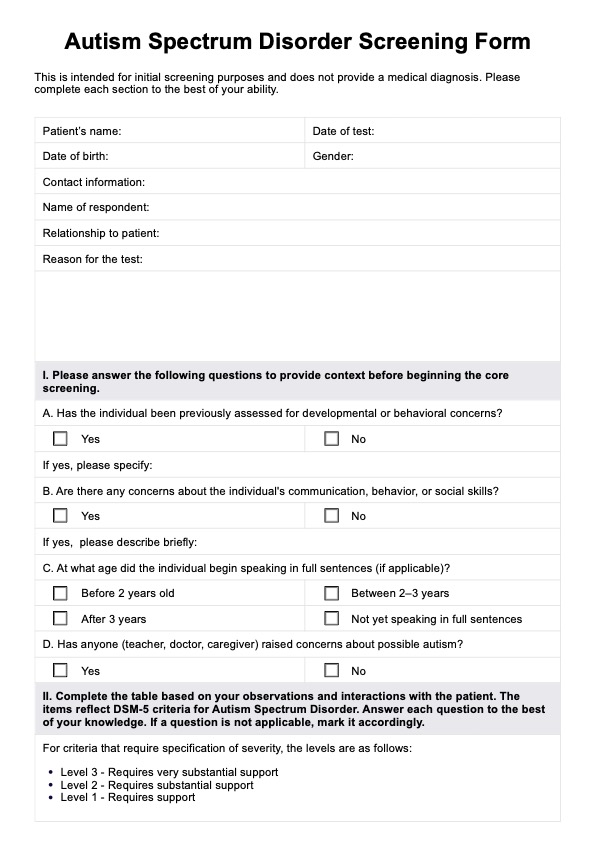Healthcare professionals, educators, parents, caregivers, and even the child's healthcare provider can request ASD screening tests when they observe behaviors or developmental concerns in individuals.

Autism Spectrum Disorder Screening
Identify possible signs of autism spectrum disorder with our easy-to-use tool. Start the assessment today to support early understanding and care.
Autism Spectrum Disorder Screening Template
Commonly asked questions
ASD screening tests are used when there are concerns about potential signs of autism, typically in children but also in adolescents and adults. They are employed during regular check-ups, school assessments, and when individuals or their caregivers express worries about development and behavior.
These tests involve questions and observations to assess behavior, communication, and social interactions. Caregivers, professionals, or individuals complete the test by responding to the questions. The results guide further evaluation if necessary.
The duration varies depending on the screening tool, but most tests can be completed in 10 to 20 minutes. The focus is on gathering essential information efficiently to determine whether further assessment is needed.
EHR and practice management software
Get started for free
*No credit card required
Free
$0/usd
Unlimited clients
Telehealth
1GB of storage
Client portal text
Automated billing and online payments











